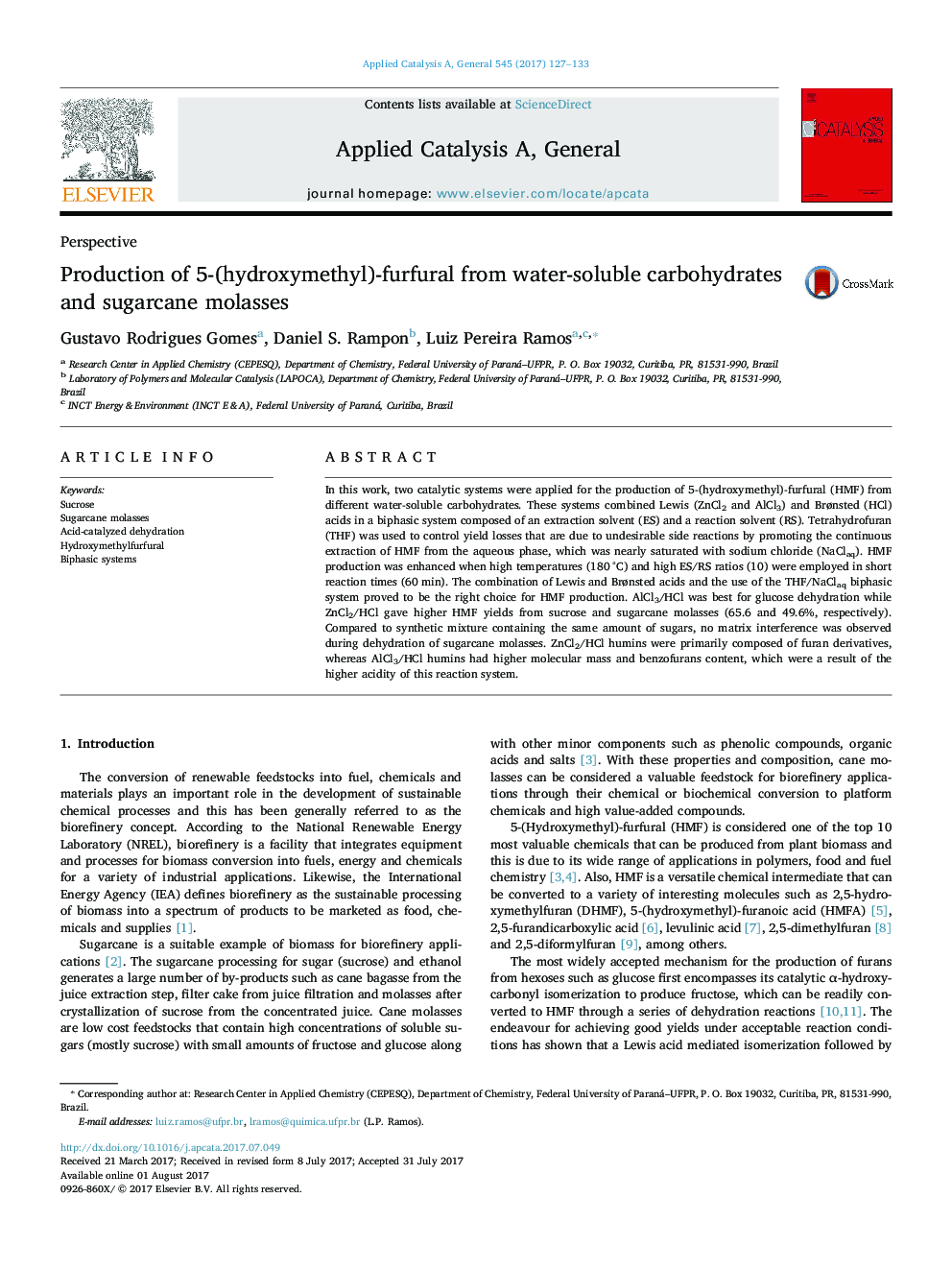| Article ID | Journal | Published Year | Pages | File Type |
|---|---|---|---|---|
| 6453261 | Applied Catalysis A: General | 2017 | 7 Pages |
â¢ZnCl2/HCl and AlCl3/HCl were used in a biphasic system to produce HMF from water-soluble carbohydrates.â¢No matrix interference was observed in the dehydration of sugarcane molasses.â¢Acid dehydration in aqueous medium produced levulinic and formic acids selectively.â¢Both catalytic systems produced humins with a furanic backbone.
In this work, two catalytic systems were applied for the production of 5-(hydroxymethyl)-furfural (HMF) from different water-soluble carbohydrates. These systems combined Lewis (ZnCl2 and AlCl3) and Brønsted (HCl) acids in a biphasic system composed of an extraction solvent (ES) and a reaction solvent (RS). Tetrahydrofuran (THF) was used to control yield losses that are due to undesirable side reactions by promoting the continuous extraction of HMF from the aqueous phase, which was nearly saturated with sodium chloride (NaClaq). HMF production was enhanced when high temperatures (180 °C) and high ES/RS ratios (10) were employed in short reaction times (60 min). The combination of Lewis and Brønsted acids and the use of the THF/NaClaq biphasic system proved to be the right choice for HMF production. AlCl3/HCl was best for glucose dehydration while ZnCl2/HCl gave higher HMF yields from sucrose and sugarcane molasses (65.6 and 49.6%, respectively). Compared to synthetic mixture containing the same amount of sugars, no matrix interference was observed during dehydration of sugarcane molasses. ZnCl2/HCl humins were primarily composed of furan derivatives, whereas AlCl3/HCl humins had higher molecular mass and benzofurans content, which were a result of the higher acidity of this reaction system.
Graphical abstractDownload high-res image (169KB)Download full-size image
